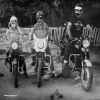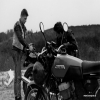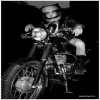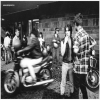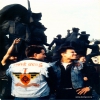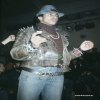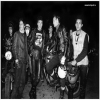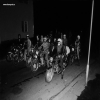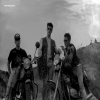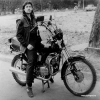
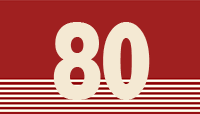
Rockers
|
The term “rockers” popped up in the early 80-s and initially applied to the soviet rock music fans, who drew their ideas about styles – not always correct – from the foreign radio broadcasts (the jamming started already in 1981) and spivvery circles. But starting 1984 the label “rocker” stuck particularly to the hardrock fans, inclining to exterior styling similar to the British “coffee-bar cowboys” and American bike-clubs. In September 1984 (on Coverdale’s birthday) this term was put up on a flag by a bunch of hard-rock fans in the Gorky Park, later it expanded into the first Moscow motorcycle gangs “Black Aces” and “Street Wolfs” and then to all motor-communities up to 1989. In the late 80-s the main spots of motor-movement , which by then numbered some hundreds of “iron horses”, were rightly considered “Luzha” (the sporting complex Luzhniki), Chekhov’s Art Theater (place in front of the theatre’s entrance) and “Solyanka” (salt vaults on Lubyanka). Less numerous motor-movement spots sprung up on “Kuzhnya” (Novokuznetskaya metro station), café “On Malaya Bronnaya street” and “Mayak” (Lighthouse) (philophonic hangout by “Melodiya” record store). The rocker routes covered almost the whole center of the city, they were overrun with gangs on Chech “Cezets” and “Jawas” without silencers, and the longest route was the night motor run from Sheremetyevo airport to Manezhnaya Square. In Leningrad the moto-movement was less popular and actually ignored any style limits until the mid 90-s.  go back to "Street Styles" go back to "Street Styles" |

